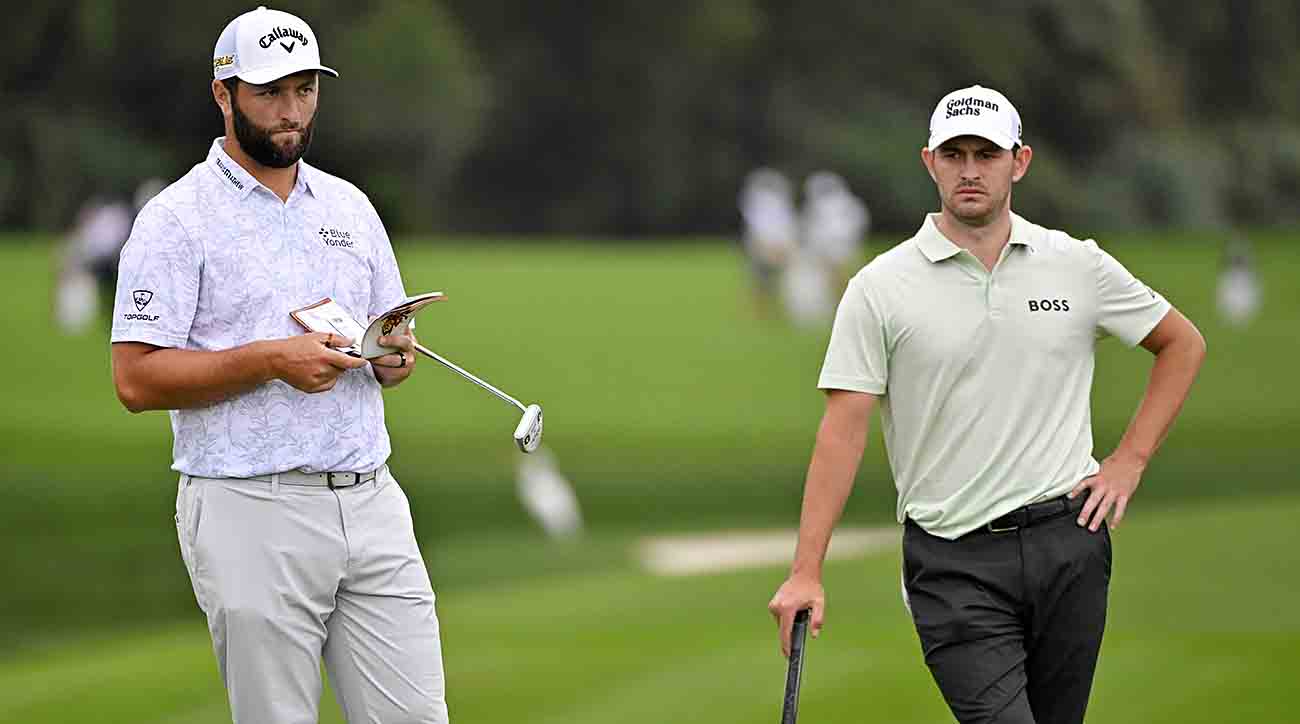It's Time to Get Serious About Putting PGA Tour Players on the Clock

Welcome to SI Golf’s Inaugural Bad Takes Week, where our writers and editors have been asked to offer their worst ideas and defend them. These are columns on takes they believe in, even if they made the rest of the room groan during the pitch meetings. Keep an eye out for more bad takes throughout the week.
Twenty-four minutes. An eternity if you’re stuck in traffic, a snapshot in time at your daughter’s wedding and, in 2023, substantial proof that Major League Baseball strengthened its sagging product by introducing numerous measures to speed up play. After seven consecutive years of taking more than three hours to complete nine innings, MLB games averaged 2:39.49—its quickest pace since 1984. Attendance rose almost 10 percent, the largest increase since the league expanded to 30 teams in 1998.
For our National Pastime, it was about time. For the other sport featuring a little white ball, the hourglass is running out of gas. Golf is in dire need of similar legislation, a sensible set of enforceable standards that would obviously make it more appealing to watch and a lot more fun to play.
If baseball can shrug off tradition, anything can. We start with a collection of no-nonsense tournament volunteers who accompany every group for all 18 holes, armed only with a stopwatch and a pair of comfortable sneakers. Players get one minute to hit a shot on Thursday and Friday, 70 seconds on Saturday and 90 seconds in the final round. All bad times are reported directly to a PGA Tour-operated scoring center—violators are not made aware of those transgressions until they finish their round.

Three bad times = one additional stroke. A fourth gets you another, and so on. Enough excuses, enough Tour officials looking in the other direction, and seriously, enough threesomes needing 4½ hours to all break 70. This is a sport, not a carriage ride powered by a 37-year-old donkey. Of course, many offenders will look to file a grievance after the requisite amount of bellyaching, which is where ShotLink becomes an invaluable asset to the pace-of-play police force.
If it can tell you how far he hit it, where it ended up and what he has left, it surely can tell you how long he took.
The Tour would merely laugh at such a crackdown, citing all those extenuating circumstances and other blurry intangibles that make the game so ponderous. Reality? Pace of play consistently generates more feedback/reader response from golf fans than any other issue. Since none of those emails plead for tour pros to slow down because the action is moving way too fast, it’s also the one topic that yields a unanimous opinion.
So everybody agrees and nothing is done. Gee, what a terrific process that is.
There are several reasons for Camp Ponte Vedra’s indifference to the matter. First and foremost, it doesn’t want to piss off any players, although many of them will tell you something needs to be done. The Tour’s primary mission is to serve its membership, which can be interpreted in any number of ways, but at the end of the day, it’s all about leaving well enough alone. Don’t interfere with the competitive element itself, even if a lot of guys perform better at a brisk pace than a sluggish one.
Still not buying? The Tour is still laughing. Why should it rush anyone contending down the stretch on an exciting Sunday telecast almost certain to bump 60 Minutes to at least 7:30? Unless it’s a blowout, every tournament’s largest viewing audience gathers in the final hour of the week. That’s Sunday evening, right before Lesley Stahl does her thing, which means maybe 10 million extra eyeballs on some 23-year-old rookie standing over a 6-footer for his first Tour win.
Make it or miss it, he’ll probably need two minutes just to read it. That donkey ain’t getting any faster.
What do you think of our Bad Takes? Got one of your own? Email your feedback here (include name and hometown) and we’ll publish the best next week.
